1061 scholarly books by Catholic University of America Press and 6
have author last names that start with I
1061 scholarly books by Catholic University of America Press and 6
1061 scholarly books by Catholic University of America Press
6 have author last names that start with I have author last names that start with I
6 have author last names that start with I have author last names that start with I
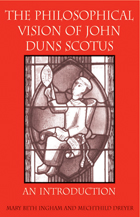
The Philosophical Vision of John Duns Scotus
An Introduction
Mary Beth Ingham
Catholic University of America Press, 2004
In this much-anticipated work, distinguished authors Mary Beth Ingham and Mechthild Dreyer present an accessible introduction to the philosophy of the thirteenth century Franciscan John Duns Scotus
[more]
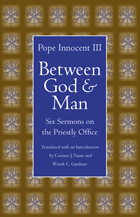
Between God and Man
Pope Innocent III
Catholic University of America Press, 2004
The sermons presented in this rich collection cast a clearer light on Innocent's concept of what his duties were as priest and bishop.
[more]
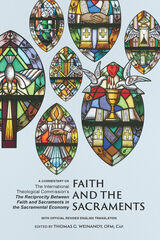
Faith and the Sacraments
A Commentary on The International Theological Commission's The Reciprocity of Faith and Sacraments in the Sacramental Economy: With Official Revised English Translation
Thomas G. International Theological Comission
Catholic University of America Press, 2022
In September of 2014 thirty new members were appointed for a five-year term to the Vatican’s International Theological Commission. These theologians, clerical and lay, were chosen from twenty-six different countries and from five continents. The commission was charged with composing three documents of contemporary theological importance, one of which was that of the relationship between faith and the sacraments. This finished document was published, with the approval of the Congregation for the Doctrine of the Faith and by Pope Francis in Spanish in early 2020 under the title: La Reciprocidad entre Fe y Sacramentos en la Economía Sacramental. A subsequent English translation was published thereafter under the title The Reciprocity Between Faith and Sacraments in the Sacramental Economy.
This present volume contains the text of the English translation. There follows an introduction by a member of the ITC, Thomas G. Weinandy, OFM, Cap., and subsequently followed by six explanatory and interpretive commentaries on various chapters of the document. Dr. John Yocum considers the contemporary relevance of the topic. Dr. Christopher Ruddy examines the dialogical nature of the sacramental economy of salvation. Dr. Jennifer Holmes Martin discusses the relationship between faith and the sacraments of initiation. There are two commentaries for section four concerning faith and the sacrament of marriage. Professor John Grabowski treats the strictly theological issues relating to faith and marriage. Canonist Timothy Cavanaugh takes up the canonical issues regarding faith and its relationship to enacting a valid sacramental marriage. Dr. Daniel Keating rounds off the commentaries by surveying the conclusion of the document, that is, the present need for evangelization so as to enliven the faith of the faithful, and the present relevance of the new ecclesial movements within the Church today.
These commentaries are aimed at aiding priests and seminarians as they address or prepare to address the pastoral and theological concerns they encounter or will encounter on a daily basis. This volume could also be used in parish adult education groups as well, wherein the laity could better understand the relationship between faith and the sacraments.
[more]
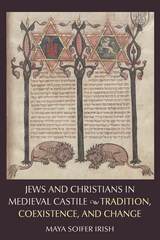
Jews and Christians in Medieval Castile
Maya Soifer Irish
Catholic University of America Press, 2016
Jews and Christians in Medieval Castile examines the changes in Jewish-Christian relations in the Iberian kingdom of Castile during the pivotal period of the reconquest and the hundred years that followed the end of its most active phase (eleventh to mid-fourteenth century). The study's focus on the Christian heartland north of the Duero River, known as Old Castile, allows for a detailed investigation of the Jews' changing relations with the area's main power players - the monarchy, the church, and the towns. In a departure from previous assessments, Soifer Irish shows that the institutional and legal norms of toleration for the Jewish minority were forged not along the military frontier with Islam, but in the north of Castile. She argues that the Jews' relationship with the Castilian monarchy was by far the most significant factor that influenced their situation in the kingdom, but also demonstrates that this relationship was inherently problematic. Although during the early centuries of Christian expansion the Jewish communities benefited from a strong royal power, after about 1250 helping maintain it proved to be costly to the Jewish communities in economic and human terms. Soifer Irish demonstrates that while some Castilian clergymen were vehemently anti-Jewish, the Castilian Church as a whole never developed a coordinated strategy on the Jews, or even showed much interest in the issue. The opposite is true about the townsmen, whose relations with their Jewish neighbors vacillated between cooperation and conflict. In the late thirteenth century, the Crown's heavy-handed tactics in enforcing the collection of outstanding debts to Jewish moneylenders led to the breakdown in the negotiations between the Jewish and Christian communities, creating a fertile ground for the formation of an anti-Jewish discourse in Castilian towns. Soifer Irish also examines the Jews' attitudes toward the various powers in the Christian society and shows that they were active players in the kingdom's politics. Jews and Christians in Medieval Castile breaks new ground in helping us understand more fully the tensions, and commonalities, between groups of different faiths in the late medieval period.
[more]
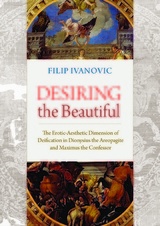
Desiring the Beautiful
Filip Ivanovic
Catholic University of America Press, 2019
Desiring the Beautiful studies the concept of deification, theosis, in two of the most influential early Christian philosopher-theologians, who might be considered as theoretical consolidators of the idea of theosis, and argues that the proper understanding of their central soteriological concept must take into account its dimension of love and beauty.
[more]
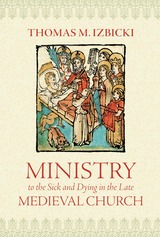
Ministry to the Sick and Dying in the Late Medieval Church
Thomas M. Izbicki
Catholic University of America Press, 2023
The focus of this volume is on ministry to the sick and dying in the later Middle Ages, especially providing them with the sacraments. Medieval writers linked illness to sin and its forgiveness. The priest, as physician of souls, was expected to heal the soul, preparing it for the hereafter. His ministry might also effect healing of bodies, when that healing did not endanger the soul. This book treats how a priest prepared to visit sick persons and went to them in procession with the Eucharist and oil of the sick. The priest was to comfort the patient and, if death was imminent, prepare the soul for the hereafter. Canon law, theology, and ritual sources are employed. Three sacraments, penance, viaticum, (final communion) and extreme unction (anointing of the sick) are treated in detail. Sickbed confession was designed to forgive the ailing person's mortal sins. A priest could absolve a dying person of all sins, even those reserved to a bishop or the pope. Viaticum was to strengthen a suffering Christian for life's last conflict, that between angels and demons for the soul of the dying person. The deathbed thus was a spiritual battlefield. Extreme unction was reserved for those in danger of death, relieving the soul of venial sins or "the remains of sin," even after confession and absolution. The commendatio animae (commendation of the soul) used with the dying was to usher the soul into the afterlife. Many works have been written about attitudes toward death, dying, and the afterlife in the Middle Ages. Likewise, there is a good deal of literature about individual sacraments. This study aims at bridging between these literatures, with a focus on the priest and parishioner in both theory and practice at the sickbed.
[more]
READERS
Browse our collection.
PUBLISHERS
See BiblioVault's publisher services.
STUDENT SERVICES
Files for college accessibility offices.
UChicago Accessibility Resources
home | accessibility | search | about | contact us
BiblioVault ® 2001 - 2024
The University of Chicago Press









